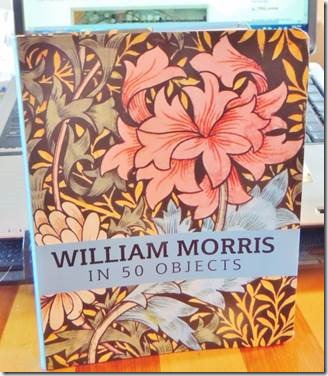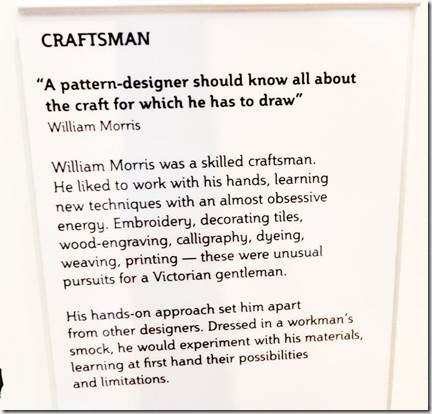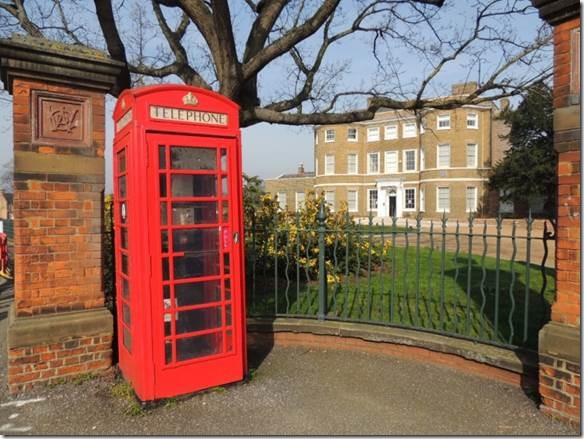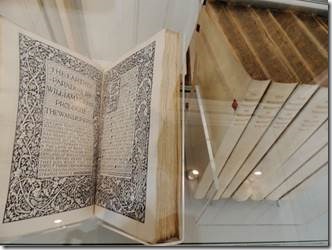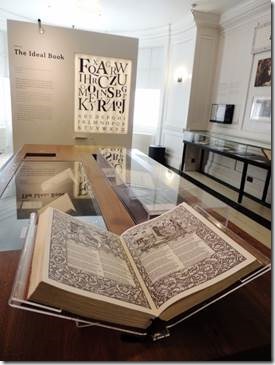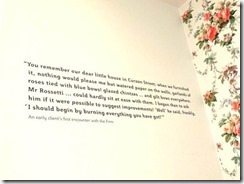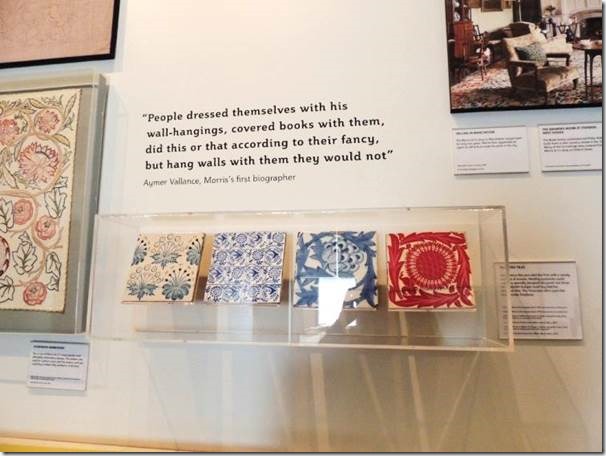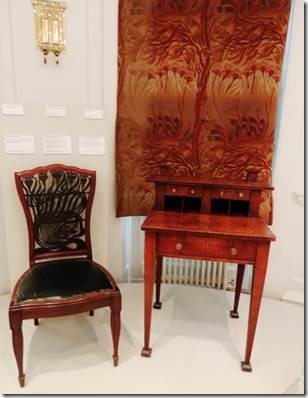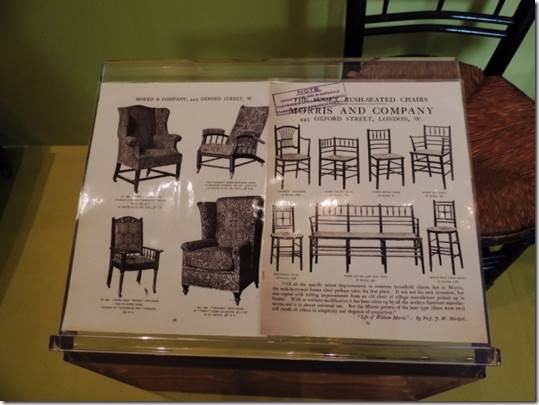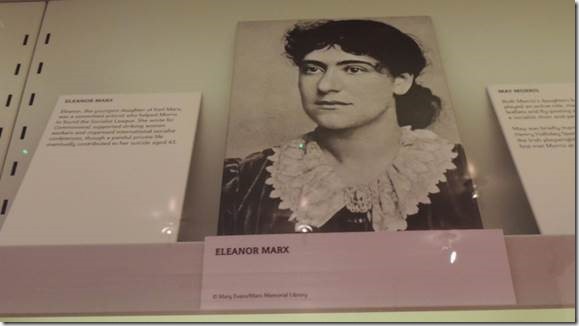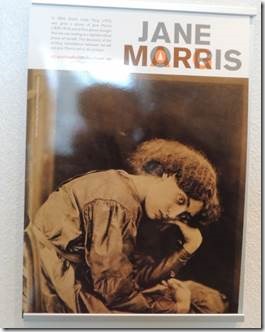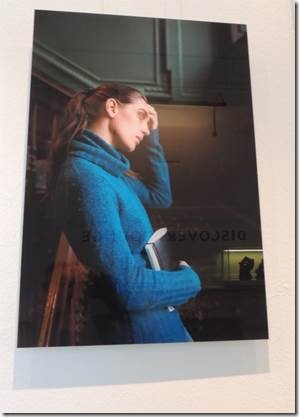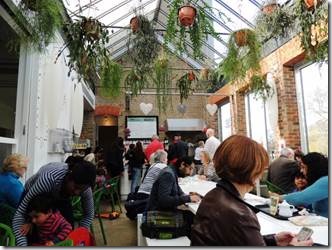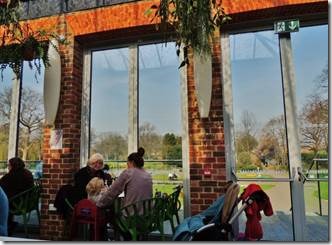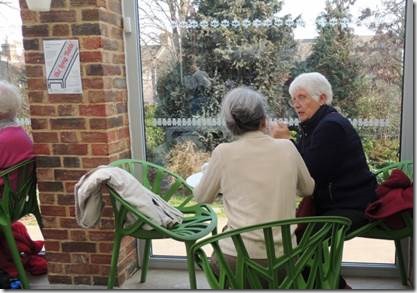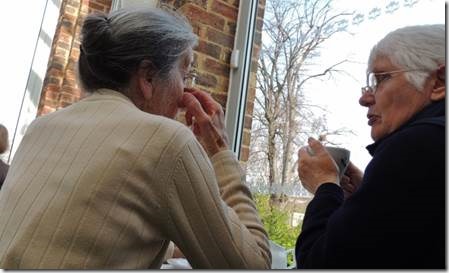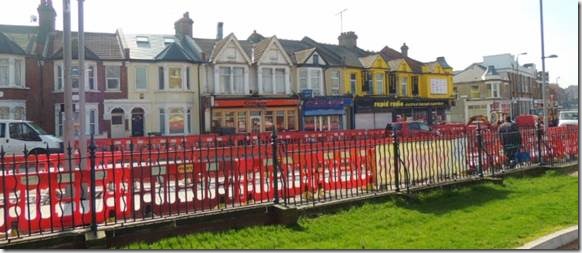Cheers,
Guess what? I got a library card at the Ipswich Public Library! Just with my VA driver’s license. How neat is that? There are about a billion charity shops here in Ipswich center, all selling books, but none with the choices of a library so a card will be great while we’re here. Yippee!
When my nephew Andrew was visiting us in London, he and I went to Walthamstow south east of London to the William Morris Gallery. I knew nothing really about the designer, activist, socialist William Morris; but now I know a little bit. Here’s the little bit that I know…
Ru
I am rather stuck on what to write about William Morris. Before visiting his home/gallery I knew as little about Morris as I did about Samuel Johnson before I visited Johnson’s house/museum. Visits helped to pique my interest in both cases. As for William Morris, Andrew’s interest encouraged my interest. I still know very little about Morris, but at least now have some clue and images come to mind if his name is mentioned.
|
My very minimal knowledge of William Morris was some flowery wall paper or fabrics, and not much more than that. I had learned about his sister, Deaconess Isabella Gilmore, when I was exploring Southwark Cathedral in London so knew that the Morris family had quite a social conscience. Also, I have long admired the furniture and crafts of Gustav Stickley, American Arts and Crafts, and the Prairie School or Mission Oak Style. I now know they were all greatly influenced by John Ruskin and William Morris |
|
One of Morris’s many designs; he taught himself how to knot Turkish carpets and many other crafts. “A William Morris arrives only once or twice each century.” Fiona MacCarthy biographer of Morris William Morris, A Life for Our Time. |
|
“The William Morris Gallery is housed in a Georgian house, built in the 1740s and set in Lloyd Park in Walthamstow, in north-east London. The grade II* listed building was Morris’s family home from 1848 to 1856. The only public Gallery devoted to William Morris, it reopened in August 2012 following a major redevelopment.” |
|
The Works of Geoffrey Chaucer (1896) Kelmscott Press (1891 – 1898) “Morris thought many of the books published in Victorian Britain were very poor quality. During the last decade of his life he established his own private press to reintroduce some of the beauty he admired in medieval books and manuscripts. He also loved medieval stories, particularly the work of English poet Geoffrey Chaucer, which he and Burne-Jones read together at university. The Kelmscott Chaucer was the most ambitious book Morris ever printed; it took four years, and was only finished just before his death. But it was a labour of love, the culmination of Morris and Burne-Jones’s long friendship. Morris designed the typeface, decorative initials and page layout; Burne-Jones designed the illustrations. The Press relied so much on Morris’s own energy and enthusiasm that it didn’t last long after his death, but its influence on European and American book design and production lasted well into the twentieth century. |
|
Morris designed furniture |
|
Morris Chair http://artsandcraftshomes.com/evolution-of-the-morris-chair/ tells the history of the Morris Chair.” http://www.morrissociety.org/morris/artdecorative.html also talks about the “Morris Chair.” http://www.douglashunter.ca Muskoka , Adirondack, Westport or Morris chair? Who lead and who followed? |
|
Eleanor Marx portrait in the William Morris Gallery Eleanor Marx worked as a political and trade union activist. She, along with William Morris, and Edward Aveling, founded the Socialist League in 1884. That same year Eleanor met Clementina Black, a painter and trade unionist, and became involved in the Women’s Trade Union League. She supported numerous strikes including the Bryant & May "match girls’" strike of 1888 and the London Dock Strike of 1889. She helped organise the Gasworkers’ Union, the fore-runner of the mighty GMB, and served on its National Executive Committee. She taught Will Thorne, the union’s legendary leader, to read and write. She wrote numerous books and articles as well as translating the works of others. She supervised, according to his wishes and in co-operation with her Uncle Fred [Engels], the publication of Volume Three of her father’s work, Capital following his death. http://www.malcsbooks.com/the-working-class-movement-in-england.php |
|
Jane Morris : Wife of William Morris and her modern look-alike exhibit “Imagine discovering a double from another century. In 2004, it happened to me, a Dutch artist (born 1975.) I was given this photograph of Jane Morris (1839-1914), and at first glance I thought I was seeing myself. This discovery of my double led to my project “Reflections on Jane Morris” in 2009 Contemporary double of Jane Morris, Dutch artist Margje Bijl, shows a series of self-portraits, staged and photographed in William and Jane Morris’s former homes. Referring back to Jane’s life story, Margje Bijl makes Jane’s environment her own. The exhibition marks the centenary of Jane’s death in January 1914. See more of Margje’s work on her website: www.reflectionsonjanemorris.com http://fannycornforth.blogspot.nl/2014/01/a-guest-at-memory-palace.html “Born in 1839, daughter of a stableman and laundress, she is seen in iconic guise – as Pandora, Proserpine, Astarte – in many paintings by Dante Gabriel Rossetti. In her own right she was a renowned embroiderer in the Arts & Crafts movement, and actively involved in the family firm Morris & Co. Known to family and friends as Janey, she is seen here in photographs taken by Frederick Hollyer in 1874 and by Emery Walker in 1898, together with portraits of her husband, poet, designer and Socialist, their daughters Jenny and May, and friends Georgiana (‘Georgie’) and Edward (‘Ned’) Burne-Jones.” http://www.npg.org.uk/whatson/display/2013/janey-morris-pre-raphaelite-muse.php http://www.dailymail.co.uk/ has some lovely painting of Jane Morris. |
|
Then it was time for coffee in the lovely restaurant/cafe. |
|
Friends and a cuppa….. small things are wonderful |
|
Row houses across from the Morris home and park show modern day Walthamstow |
|
http://www.vam.ac.uk/page/w/william-morris/ is the William Morris page at the V & A Museum |
|
For more about William Morris …… “In this respect, Morris fundamental mantra of ‘have nothing in your house that you do not know to be useful, or believe to be beautiful’ touches on much more than just a theory on aesthetics. It taps into some of the most contemporary of ideas concerning localized environments, sourcing, recycling and sustainability.” http://thetextileblog.blogspot.com/ “There was a profound social philosophy behind Morris’ designing. He was a committed socialist and medievalist who was horrified by increasing mechanization and mass-production in the arts, and he dreamed of reestablishing the values of traditional craftsmanship and simplicity of design. His slogan was that art should be "by the people, for the people". http://www.britainexpress.com/History/morris.htm “Aspects of Morris can appear slightly ridiculous: his political ideas are beyond dippy, his novels unreadable and his designs, with their frantic, pseudo-medieval elaboration, hopelessly removed from today’s taste. Viewed from a broader perspective, however, Morris can be seen as the author of ideas about the relationship between art, design and everyday life which fed into everything from the Bauhaus to Ikea. Traditionally, beautiful things were seen simply as luxuries you either could or couldn’t afford. Morris, however, believed that everyone was entitled to be surrounded by beauty, that the way things were made was as important as the way they looked, that rather than being an eclectic mish-mash – on the classic Victorian model – a living environment should be an integrated whole that had a moral impact on the people living in it.” http://www.telegraph.co.uk/ The origins of the Movement (Arts and Crafts) In Britain the disastrous effects of industrial manufacture and unregulated trade had been recognised since about 1840, but it was not until the 1860s and 1870s that architects, designers and artists began to pioneer new approaches to design and the decorative arts. These, in turn, led to the foundation of the Arts and Crafts Movement. The two most influential figures were the theorist and critic John Ruskin and the designer, writer and activist William Morris. Ruskin examined the relationship between art, society and labour. Morris put Ruskin’s philosophies into practice, placing great value on work, the joy of craftsmanship and the natural beauty of materials. By the 1880s Morris had become an internationally renowned and commercially successful designer and manufacturer. New guilds and societies began to take up his ideas, presenting for the first time a unified approach among architects, painters, sculptors and designers. In doing so, they brought Arts and Crafts ideals to a wider public. http://www.vam.ac.uk/content/articles/t/the-arts-and-crafts-movement/ “William Morris was not only a designer and craftsman; he was also a writer, retailer, and political activist. This tour of ten objects from the collections introduces his remarkable life and career.” http://www.wmgallery.org.uk/collection/themes/william-morris/ is the link to see what those 10 objects are. |

